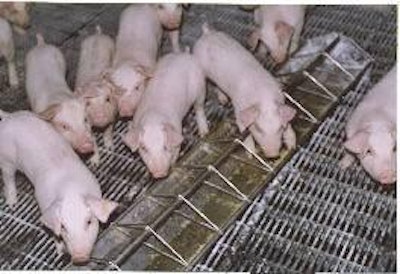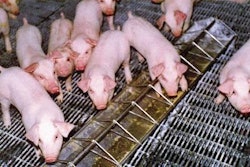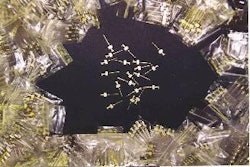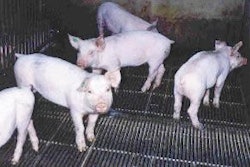
About 100 kilometres from Tokyo in central Japan lies Gunma prefecture, a picturesque place of mountains and lakes. It is also a challenging area for pig production. The inland climate is characterised by hot-humid summers and cold-dry winters, while the local environmental imperatives dictate that all pig units must be good neighbours.
Combating pig manure smell with bacteria
At Hayashi Farm Inc in Gunma, it means a series of precautions both to protect the animals from adverse temperatures and to guard against the release of malodours that might cause offence in the neighbourhood. The climate control systems are rather conventional from an international viewpoint high ventilation rates can make the compartments cooler than the outside heat of summer by about 5 degrees Celsius, with wet-pad cooling as an extra aid despite the seasonal humidity.
Less conventional internationally is that bacteria are deliberately included in the water used for pressure-washing the nursery pens on a daily basis. The microbes have been specially chosen to digest organic materials in manure that could create a smell. Their role is to occupy the channels under the floors of the slatted nurseries and so reduce the risk of the slurry generating offensive odours.
Using bacteria in the barn against a potential smell problem is not rare among Japanese pig enterprises, according to Atsushi Hayashi at the Gunma facility. Other methods for applying the bacteria are also used commonly. Some producers put it in the pigs' feed or water. Hayashi Farm Inc started using bacteria in this way about 4 years ago for its network of 7 units with 4500 sows, where progeny are marketed at a slaughter weight of 115kg.
"We needed to do something for pig odour control," he says, "but it was not easy to find a good method. Even if we use the right type of bacteria, but the numbers are too small, it is not effective. To keep the proper number of bacteria is important. And smell is not at the same level day by day. It is difficult to know what makes the difference from one time to another. It is commonly said that the effectiveness also seems to depend on the farm and even on the weather."
The bacteria here originate from soil microbes of a type that are used for treating human waste. Atsushi's family-owned business buys concentrated cultures as a liquid for use in growing its own supply to apply to the slurry. Cultivation means adding the liquid culture and a little slurry (as feed for bacteria) to water in large vats and introducing air. After about 1 week of this aeration, the organisms have multiplied enough to be drawn off from the tank and added to washing water.
The installation for this purpose consists of tanks inside a covered shed next to the nursery. When ready for use, the bacterial solution is pumped through a pipe into the weaner accommodation and taken directly into the reservoir of a pressure washer, where it is diluted by over 90%. Bacteria are included in the wash-down water from the day of the pig's arrival. In the below-slat channels which measure about a metre deep from the underside of the slats enzymes associated with the bacteria can also block an increase of flies.
"Our farm practises multi-site production with the 4500 sows," Atsushi Hayashi reports. "We wean around 21 days old on average, moving the piglets to a separate nursery site where they follow an all-in/all-out system until they are transferred again to grow-finish at 70 days. Most of the mating/gestation and the farrowing areas at the sow sites, also all of finishing sites, are equipped to separate the manure into solid and liquid parts inside the barn. But our weaner barns have no separation of this type".

















